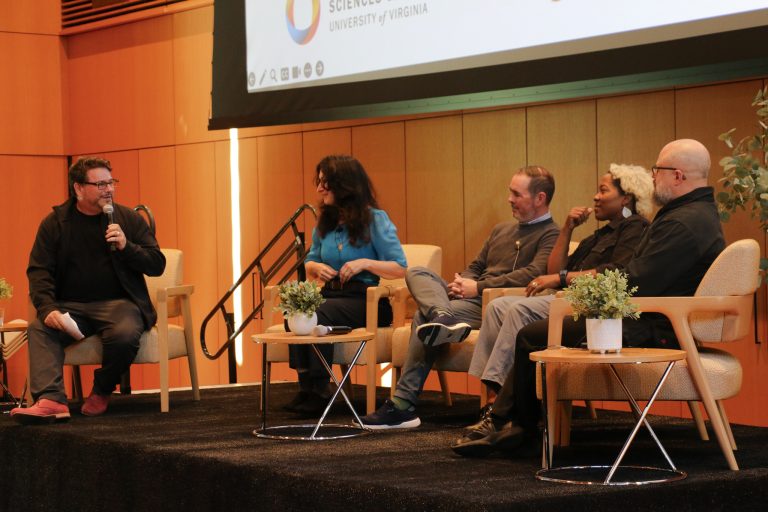Jhāna meditation and the practice of speaking in tongues could hardly look more different. In jhāna, the body settles into stillness: quiet, seated, composed. From the outside, nothing stirs—an almost austere calm, cultivated through generations of Buddhist teaching that has spelled out in detail how attention should be directed toward the breath or another chosen object. Practitioners describe moving, step by step, into states of absorption marked by stability, equanimity, even bliss.
Tongues, by contrast, explodes outward. Here the body and voice shape cries, wails, bursts of laughter, sometimes even dance. What comes out sounds like nonsense, but for practitioners it is the Holy Spirit itself shaping prayer through them. The practice finds theological roots in the New Testament, but its life has been carried on by oral tradition—especially through the vitality of the Black Church (Hollenweger 1988).
Seen side by side, one practice seems the epitome of self-discipline, the other of release. At least on the surface, there is no confusing the two.
But when we asked practitioners to describe the inner details of their experiences, we found something surprising: a common spiraling dynamic. Across dozens of interviews, experienced meditators and prayer practitioners described an unfolding sequence of states marked by concentrated attention, rising arousal or joy, and a profound sense of surrender. Through the calm of jhāna meditation and the fire of tongues prayer, these experiences shared a dynamic rhythm: Attention feeds arousal, arousal deepens focus, and together, they enable release.
We found that jhāna meditation and speaking in tongues seem to take advantage of a special feedback loop in the human mind—a pattern of human cognition that we call the attention, arousal, and release spiral. In both practices, practitioners[MU1] sustain attention on an object (either God or a meditation object such as the breath). Sustained attention makes the object feel increasingly clear, which produces feelings of joy. This joy makes the act of paying attention increasingly effortless, because the human mind has a natural tendency to be drawn to objects of attention that feel joyful. This then reinforces a feeling of effortless attention or release, creating a feedback loop that leads to deeper and deeper states of bliss.
Consider the following quote. From which tradition does it seem to come?
I let go of everything . . . It feels like you’re falling. The first few times that happened to me, it was terrifying. I like to call it ‘slipping upward’ because it feels like a lifting to me . . .
How about this next one?
It feels like a constant invitation to let go of more control, and the more control I let go the more powerful an experience it is. I’m shaking. I’m trembling. I feel sensations in my body which I believe is having given up more control. And the more I let go, the lighter I feel. The more set free from all the cares in the world and the worries I have on my shoulders, it makes me want to laugh at myself . . .
Can you tell which is speaking in tongues and which is jhāna? The first was jhana, the second tongues. Don’t worry if you got it wrong, even experienced contemplative practitioners seem to get these correct only about half the time.
Subjects and Methods
Our findings come from interviews with over 80 charismatic Christians and 10 advanced jhāna meditators who were interviewed after a retreat led by Shaila Catherine. The jhāna interviews were conducted as part of a collaborative initiative between McGill University, Dharma College and UC Berkeley. We employed the method of comparative phenomenology, which involves long-form interviews asking systematic questions about the details of lived experience to investigate how different cultural groups and practice contexts shape the texture of subjectivity.
Attention: The Entry Point
Jhāna practice begins with steady attention to breath or to a light in the mind’s eye (nimitta). Practitioners described narrowing their awareness until the object became radiant and central. For tongues practitioners, attention began with devotion: a hungry pressing into God, seeking contact through sound, prayer, or stillness. In both cases, attention is not passive. It is vivid and immersive.
Arousal or Joy
In jhāna, this focused attention gives rise to pīti—a joyful energy that can feel like a tingling flood or quiet warmth. It can be so intense that it distracts. Teachers caution against clinging to this bliss, urging students to move beyond the sensations toward equanimity.
Tongues practitioners described arousal in metaphor-rich terms: fire in the hands, electricity in the spine, steam rising from the skin. This noisy practice fills the mind with sound and images of God, and yet that rhythmic chaos can turn to white noise that flips unexpectedly into stillness and peace. Despite the emotional peaks, the goal is not ecstasy, but connection with God and submission.
Release
A jhāna meditator told us: “I set the intention—‘May I enter the first jhāna, a happiness born of seclusion.’ Then I let go of everything.” She described it as a fall upward, a plunge into joy and stillness.
A tongues practitioner, in contrast, spoke of trembling and tears: “The more I let go, the more powerful it gets. I feel lighter, like I’m just a dot on the earth and God is in control.”
Despite their different cultural frameworks, both were describing an oscillation: a passionate attention (to breath or to God), an increase in internal energy or joy, and a felt release that opened into greater absorption. This spiral repeated across their sessions and across participants. Whether called rapture or pīti, Holy Spirit or nimitta, the pattern held.
The Spiral in the Mind
We see this spiral of experience as aligning with current scientific understandings of attention based in predictive processing. This emerging neuroscientific framework understands the brain as a predictive system that constantly builds models of the world and updates them to minimize the gap between expectation and sensory input (Friston et al. 2017; Joffily & Coricelli 2013; Seth & Friston 2016). If we follow this framework, when attention focuses on a stable perceptual object (such as breath or divine presence), this may boost the reliability of the brain’s model of the object and thus reduce uncertainty. According to predictive processing, reduction in uncertainty is generally thought to generate positive affect, and positive affect is thought to spontaneously capture attention. So as the clarity of the object of concentration increases, this may generate positive affect, and this positive affect may then naturally draw attention more deeply into the sensory qualities of the object, thus further reinforcing the clarity and confidence of the brain’s model of the object. This positive feedback loop—attention enhancing clarity, clarity generating joy, joy inviting further attention—makes it easier to pay attention. As the process becomes more automatic and less effortful, practitioners describe an ease that allows for greater release of cognitive control. They can then deliberately let go of control even further.
These states also may involve an unusual coactivation of the sympathetic (arousal) and parasympathetic (calm) nervous systems, typically seen as opposing forces but here working in concert to produce a paradoxical blend of intense energy and deep peace—a stable embodied balance (Berntson et al. 1999). This could explain the mix of clarity, vitality, and serenity reported across traditions.
Why This Matters
Our study takes up an old question in the study of religion—do different traditions of spiritual practice draw on common features of human experience, even if they are embedded in radically different belief systems and social frameworks? And what can this kind of comparative analysis teach us about the basic building blocks of spiritual experience?
As far as we can tell, a spiraling dynamic between attention, arousal and release leading to increasingly deep and effortless bliss is a relatively novel idea in the psychological sciences. And it is fascinating to us that both of these radically different spiritual traditions seem to have discovered it and made use of it in different ways, especially since on the surface these practices look very different—one quite calm and the other highly aroused.
In addition, these findings challenge important assumptions about contemplative states. They show that focused attention doesn’t just quiet the mind—it can energize and transform it. They also show that high arousal and deep peace can co-exist. And they suggest that spiritual release is not the opposite of control, but a skillful yielding that incorporates both structure and freedom.
We are currently exploring the physiological side of the story to see if we can show neurobiological correlates to the spiral we observed at the level of experience.
Note: All quotes are from anonymized research participants. Research was conducted with IRB approval and informed consent. To see the full paper look at Brahinsky, Josh, Jonas Mago, Mark Miller, Shaila Catherine, and Michael Lifshitz 2024. The Spiral of Attention, Arousal, and Release: A Comparative Phenomenology of Jhāna Meditation and Speaking in Tongues. American Journal of Human Biology 36(12): e24189.








